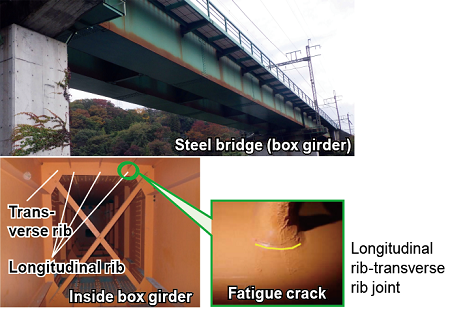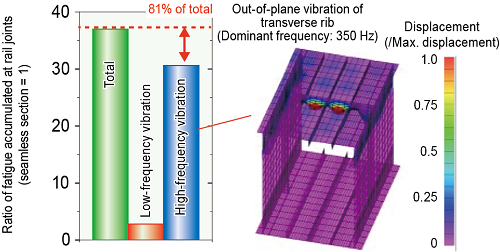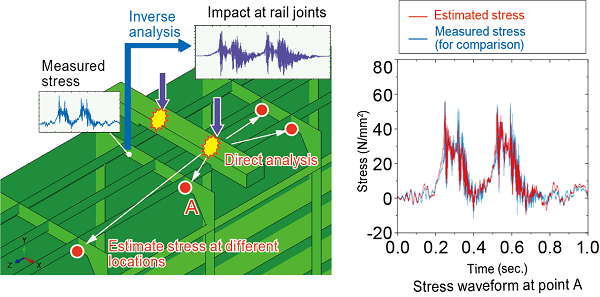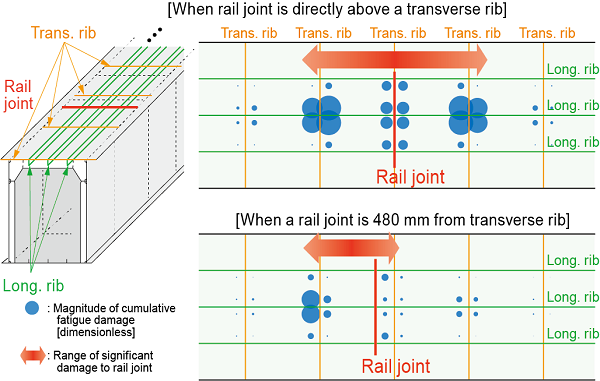17. Method for evaluating the effect of impact load on fatigue of steel bridges at rail joints
Fatigue cracks tend to occur frequently in the vicinity of rail joints on steel bridges (Fig. 1). The low-frequency vibrations arising from wheel movement are known to cause fatigue cracks. However, at rail joints, this is worsened by the impact loads generated when train wheels roll over the joint, causing high-frequency vibrations of several hundred Hz in steel bridge members. Measurements on existing bridges and analysis have proven that stresses caused by these high-frequency vibrations contribute significantly to the initiation of fatigue cracks (Fig. 2). Since these high-frequency vibrations are localized, it is necessary to check every bridge member for the presence of fatigue cracks during inspections; a significant burden.
In light of this, we developed an analytical method that estimates the stresses caused by high-frequency vibrations and evaluates the accumulated fatigue in the members of steel bridges. A feature of this method is that the impact load at rail joints is calculated from measured stress at one or two locations by inverse analysis and then the stress at any location is estimated, using the impact load as an input (Fig. 3). The method can be used to identify areas where accumulated fatigue is large (Fig. 4), to define the areas that require concentrated attention during inspections, thereby increasing inspection efficiency. Since the method identifies the propagation paths of high-frequency vibration and vibration characteristics, it can also be useful in selecting more effective reinforcement methods and enabling more efficient maintenance and management of steel bridges.
Other Contents
- 12. System for determining the degree of deterioration of wooden sleepers using images of railway tracks in front of trains
- 13. A method for constructing communication-based train control systems using public communication network
- 14. Automatic anomaly detection using vehicle condition monitoring data without additional sensors
- 15. An soundness evaluation index and method for dealing with ballasted track that is contaminated with soil
- 16. Method for reducing the frequency of maintenance on standard longitudinal sleepers at boundaries with structures
- 17. Method for evaluating the effect of impact load on fatigue of steel bridges at rail joints
- 12. System for determining the degree of deterioration of wooden sleepers using images of railway tracks in front of trains
- 13. A method for constructing communication-based train control systems using public communication network
- 14. Automatic anomaly detection using vehicle condition monitoring data without additional sensors
- 15. An soundness evaluation index and method for dealing with ballasted track that is contaminated with soil
- 16. Method for reducing the frequency of maintenance on standard longitudinal sleepers at boundaries with structures
- 17. Method for evaluating the effect of impact load on fatigue of steel bridges at rail joints




